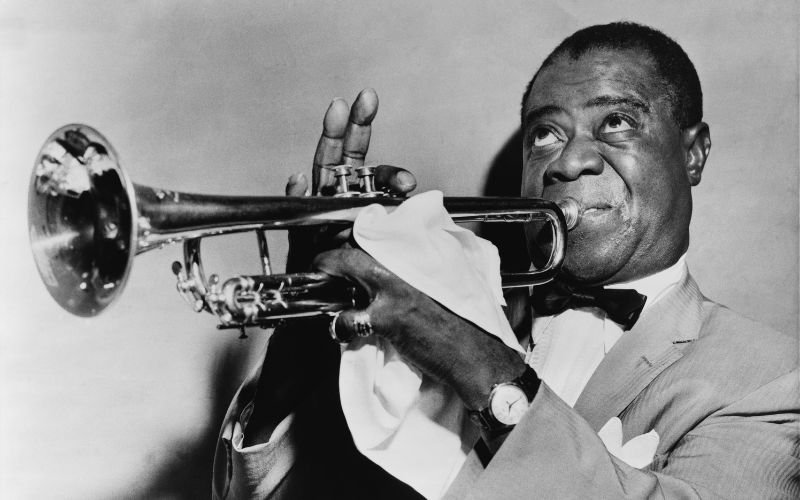Rhythm and blues: its origins and history
A musical movement that has evolved from its roots over the decades, rhythm & blues has had a major impact on popular music today. More than just a musical genre, rhythm & blues has inspired the birth of other essential aesthetics such as rock and pop. From its roots in American blues to Beyoncé's R&B and Elvis Presley's rock, rhythm & blues has undergone many changes throughout the XXᵉ century.
Origins, trends, key musicians and recent developments in rhythm & blues: Newzik presents the exciting history of the genre that revolutionized music in modern times.
What is rhythm and blues?
Plural in its roots, rhythm & blues is an African-American musical genre that emerged in the 1940s from different foundations: firstly , blues, itself influenced by jazz, gospel and rhythm & swing. This distinctive genre is characterized by syncopated rhythms, catchy melodies and often poignant lyrics lyrics, expressing the joys and sorrows of everyday life.
Originally called "race music" to describe music played by black musicians in the early 1940s, "race music" evolved into "rhythm & blues", with "rhythm" denoting an accelerated tempo and"blues" recalling the 12 bars blues rule.
The advent of rhythm & blues marked the entry of black music into the circle of white popular music. This novelty paved the way for the development of rock and roll in the early 1950s! White musicians and artists such as Elvis Presley, Bill Halley and Buddy Holly **** adopted the rock and roll musical and dance style in their own image.
💡 With a strong following, the rhythm & blues movement was to influence the record companies that closely followed the musical trend. Specialized independent labels (such as Chess in Chicago or the Specialité label in Los Angeles) were to become major labels (as Atlantic Records, now owned by Warner, has become).
The great currents of rhythm & blues
Although rhythm & blues flooded the United States in the 1940s, there were three main movements within the movement:
The New York and Los Angeles rhythm and blues movement: characterized by small groups and a powerful singing style, sometimes described as "screamed", this movement is in the tradition of the "blues shouters". These artists helped popularize R&B with their energy and expressiveness, often accompanied by small, dynamic orchestras.
🎷 Louis Jordan embodies the very origins of rhythm and blues. A jazz saxophonist inspired by the swing tradition, Louis Jordan plays blues music accompanied by syncopated, dynamic melodies.
Southern and mid-western rhythm and blues: this movement represents the synthesis between rural blues and the introduction of the electric guitar. It emerged mainly in the southern United States and the Midwest, where musicians adapted rural blues traditions to an urban context, using electric instruments and incorporating elements of jazz and gospel.
🎷 Black American pianist, composer and singer, Fats Domino formed an orchestra at an early age that became famous for its danceable boogie-jazz style. Domino was one of the first musicians to include electric guitars in his orchestra, the forerunner of the rock and roll bands and orchestras heard alongside Chuck Berry and Little Richard, for example.
The rhythm and blues doo-wop movement : "doo-wop" is characterized by harmonious, elaborate vocal groups, named after the characteristic vocal sounds that accompany them. These musicians emerged mainly in the 1950s and helped popularize R&B with sophisticated, memorable vocal performances.
🎷 Among the rhythm & blues greats recognized for their outstanding vocal performances is the great Ray Charles, a soul legend whose song "What I'd Say" is among the great classics of rhythm and blues doo-wop music.
The birth ofrhythm and blues
The origins of the genre: the blues
The blues is a musical genre deeply rooted in the African-American experience, emerging from the cotton plantations of the Mississippi Delta and the bustling streets of New Orleans. Blues is often portrayed as the cry of the soul, expressing the struggle, pain and resilience of the black American people.
Born in the American South, where African-American workers sang and played their sorrows on guitar, rhythm & blues was born among the rural blues that permeated the atmosphere with its rich heritage and distinctive musical style. Rhythm & blues also has its roots in the experiences and sufferings of the black American people during the periods of slavery and segregation. Cities like Memphis, Tennessee, and New Orleans, Louisiana, also played an important role in the development and spread of the blues, providing spaces where musicians could perform and contributing to the diversification of musical styles and influences.
The emergence of rock and roll
The evolution of rhythm & blues is directly linked to the emergence of rock and roll, a revolutionary musical movement that shook the foundations of popular culture in the 1940s and 1950s. At that time, visionary artists such as Chuck Berry, Little Richard and Fats Domino emerged as pioneers of this bold fusion of blues and new, electric energy, creating the distinctive rock and roll sound that would change the musical landscape forever.
By combining the syncopated rhythms and deep emotions of the blues with a rebellious energy, these artists shaped the sound of rock and roll and ushered in a new era of popular music. Their influence lives on today, and their legacy continues to inspire generations of artists around the world.
The history and evolution ofrhythm and blues
The 1940s: the advent of rhythm and blues
At the heart of the 1940s decade, Delta blues continued to exert a major influence on the development of rhythm & blues. Artists like Robert Johnson and Son House popularized this emotionally charged style, expressing the struggles and hopes of the African-American people.
In bustling northern cities like Chicago, a new form of blues was emerging, infused with the urban energy and electricity of the big city. Chicago blues, with artists such as Muddy Waters and Howlin' Wolf, captured the raw, powerful essence of city life, with roaring electric guitars and swirling harmonicas.
Finally, in clubs and dance halls across the country, rhythm & blues was taking shape, fusing elements of the blues with driving rhythms and sophisticated arrangements. Louis Jordan and Wynonie Harris helped make this musical style popular, creating irresistible hits that got people up and dancing.
💡 Did you know? In addition to respecting the code of blues and black music, the essence of rhythm & blues is characterized by a "groovy" tune and melodies that should make people dance.
The 1950s: the effervescence of the current
The 1950s were the heyday of rhythm & blues, with the emergence of iconic labels such as Motown Records, Stax Records and Atlantic Records. These labels played a major role in promoting and disseminating the genre, producing a plethora of legendary artists who left an indelible mark on the history of music.
Among these artists, three names stand out in particular: BB King, often dubbed the "King of the Blues", elevated the blues to an art form with his expressive guitar style and passionate performances. Ray Charles, with his powerful voice and talent for blending blues with other musical genres, pushed back the boundaries of rhythm & blues and opened the way to new musical explorations. Last but not least, Etta James, with her striking voice and emotional interpretation, captured the very essence of rhythm & blues, inspiring generations of artists to come.
The transformation of rhythm and blues from the 1960s onwards
This decade marked a turning point in the history of rhythm & blues, with the emergence of soul music and funk. These new musical styles broadened the genre's horizons, incorporating elements of gospel, jazz and rhythm & blues.
A landmark song released in the early 1960s, Sam Cooke's Chain Gang represents the R&B trend of the decade.
Artists like Marvin Gaye, Aretha Franklin and James Brown dominated the music scene of that decade, with iconic songs that captured the public imagination and left an indelible mark on music history.
Their music was not only a reflection of the tumultuous times in which they lived, but also a call for hope, justice and universal love.
Rhythm & Blues is a living testimony to African-American history and culture, a powerful voice that has shaped the modern musical landscape and continues to inspire generations of artists worldwide.
From rhythm & blues to contemporary R&B
Whereas the R&B of earlier years was rooted in the traditions of blues, jazz and gospel, modern R&B has embraced new styles, sounds and technologies to create a fresh, modern sound.
Music production technologies also played a major role in the evolution of the R&B sound. The use of synthesizers, drum machines and other electronic equipment has enabled artists to push the boundaries of sonic creativity. The R&B popularized since the 1990s draws on a vast palette of musical styles drawn from black music, from hip-hop and dancehall to pop and electronica. This fusion of diverse influences gives modern R&B a sound that appeals to a wide audience.
Artists like Beyoncé, Rihanna, Drake, and The Weeknd have redefined the contours of original R&B with a popular mix of styles and sounds. Neo-soul, trap soul and alternative R&B aesthetics bring new diversity to the ever-evolving current!

